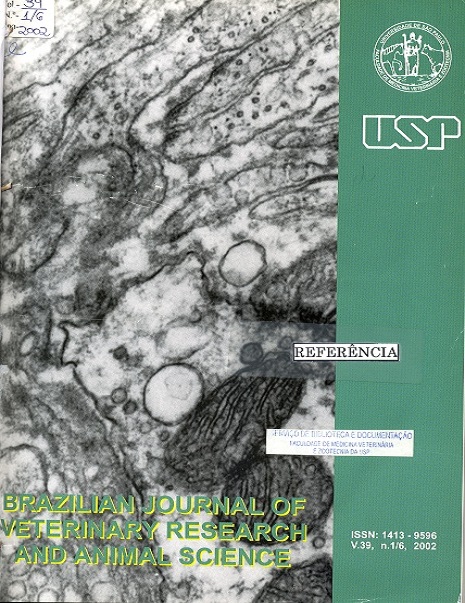Effect of estrus synchronization and artificial insemination on reproductive performance of Merino sheep
DOI:
https://doi.org/10.1590/S1413-95962002000300006Keywords:
Sheep, Reproductive performance, Artificial insemination, PMSG, RamsAbstract
The experiment was conducted to determine the reproductive performance (lambing rate and litter size) of sheep artificially inseminated at a synchronized estrus in relation to rams, dose of PMSG and number of artificial inseminations performed. During spring cyclic Merino adult ewes were treated with intravaginal sponges impregnated with 60 mg medroxyprogesterone acetate (MAP). After 14 days sponges were removed and the females received an intramuscular injection of either 375 or 400 IU pregnant mare serum gonadotropin (PMSG). Estrus detection was performed with vasectomized rams. Females in estrus were cervically inseminated with fresh diluted semen from different rams either once or twice. Data on lambing rate and litter size were recorded. Lambing rate was not affected by rams or number of inseminations. A higher proportion of ewes that received 400 IU PMSG lambed compared with those receiving 375 IU PMSG (76.47% v 54.32%; p<0.01). Litter size was not affected by any of the variables under study.Downloads
Download data is not yet available.
Downloads
Published
2002-01-01
Issue
Section
UNDEFINIED
License
The journal content is authorized under the Creative Commons BY-NC-SA license (summary of the license: https://
How to Cite
1.
Simonetti L, Ramos G, Gardón JC. Effect of estrus synchronization and artificial insemination on reproductive performance of Merino sheep. Braz. J. Vet. Res. Anim. Sci. [Internet]. 2002 Jan. 1 [cited 2026 Jan. 16];39(3):143-6. Available from: https://revistas.usp.br/bjvras/article/view/5976





